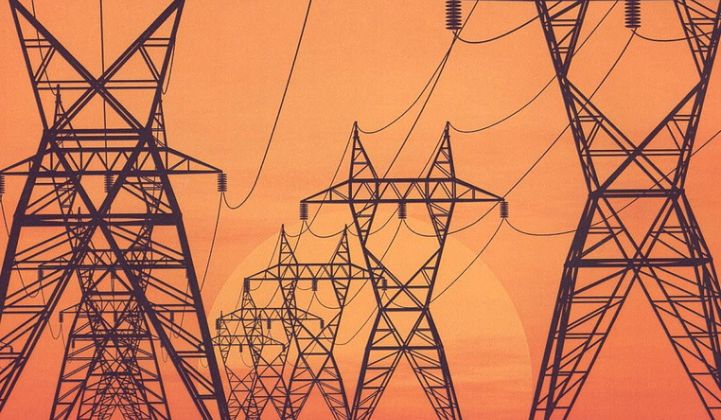Varentec, a startup working on giving utilities digital control over their power grids, has raised $7.7 million from investors led by Khosla Ventures. Looks like Vinod Khosla is placing a bet on his belief that power electronics are the future of the smart grid.
That’s because the Menlo Park, Calif.-based startup is working on a market that’s very much in the future. We’re talking about a transformation of the grid from an “analog” magnets-and-wire power delivery network to one that can control and direct the flow of power much the way an internet router directs traffic: in “packets” identifiable all the way from generation to use.
That’s going to require a massive overhaul of the grid, and most industry observers predict it will take decades, rather than years, for it to grow. Meanwhile, technology like solid state transformers, next-generation inverters and other power electronics gear are in the realm of lab projects and modeling exercises at present. But certain changes in the grid -- primarily, the massive introduction of on-again, off-again wind and solar power -- are going to start making it a requirement, rather than an option.
At least that’s the view of Deepak Divan, the man who’s led the startup’s work with ARPA-E, the federal blue-sky energy research program before taking over as Varentec's president and CTO. Funded by a $2.2 million Department of Energy grant in 2010 and a $5 million ARPA-E grant in October, Divan’s team has been working on “power router” technology since last year, and raised the $7.7 million in September, along with another $1 million or so in equipment financing.
As for what Varentec has developed, it's “a solution that wraps onto existing assets on the grid and converts them to dispatchable sources, to control the flow of real and reactive power,” Divan said in a Wednesday interview. The concept sounds similar to the idea of using solar power inverters to balance the surges and sags of local distribution circuits, adding static VAR compensators to wind farms or installing flexible AC transmission (FACTS) devices at substations.
But in Divan’s view, today’s smart grid communications networks, no matter how fast, just can’t work fast enough or in a sufficiently integrated manner to keep the grid stable in regions where wind and solar power are abundant, let alone “meet the needs of a more efficient energy market.”
“It’s our very strong belief that along with 'smart,' we also need dynamic controllability,” he said. That means replacing today’s AC grid with one that’s split up into nodes controlled by AC-to-DC-to-AC converters, working efficiently enough to make their expanded control capabilities worth their extra cost.
Divan was quite close-mouthed about Varentec’s exact approach to the market, though he stressed that it wouldn’t rely on building new digital grid equipment, or simply tagging power with digital signals. Rather, it’s about creating whatever utilities need most -- and those needs may take time to develop, he said.
There’s definitely a long time to market for anyone treading into the digital grid realm. The Digital Grid Consortium, which includes Japan’s ORIX Corp., NEC Corp. and National Instruments, plans to spend the next year simply modeling what a digital grid might look like. Companies like Cree, ABB and Gridco Systems are still testing their digital grid devices, and Tres Amigas has raised only $15 million so far for its ambitious plan for a multibillion-dollar digital AC-DC-AC transmission hub in the U.S. Southwest.
Varentec is staying pretty secretive about the nature of its research and development, as well. Divan said the ARPA-E project, being done with EPRI, Waukesha Electric and Georgia Tech, will be complete in the next year and a half or so, but he wouldn’t say much more about it, besides that it would be able to handle about a megawatt of power. That should serve as a proof point for the technology, but business cases for utilities remain harder to predict, he said.
“Utilities don’t really have a workforce with the capability and experience to take a lot of these very complex solutions and maintain them and extract the best value from them,” he said. At the same time, they’re leery of new technology meeting strict reliability requirements. In fact, one of Varentec’s promises for its technology is that, if it fails, it doesn’t bring the grid down with it, but rather “fails to normal” state, leaving the grid as it was before, Divan said.
Khosla Ventures has almost no investments in smart grid, perhaps because Khosla himself has been so bearish on the industry. The exception is power electronics, where he sees a generational opportunity. “A 50-year-old transformer made of copper wire wound around a ferrite core can't respond to a signal, so we can't control it," Khosla said at a 2010 conference. "If we invest in new power electronics devices, things will change radically. The design of existing systems will change based on these new components."
As for how Varentec planned to spend its money, Divan said, “If I know the VCs well, they’d like to see us get to pilot as quickly as possible,” though he wouldn’t elaborate.



